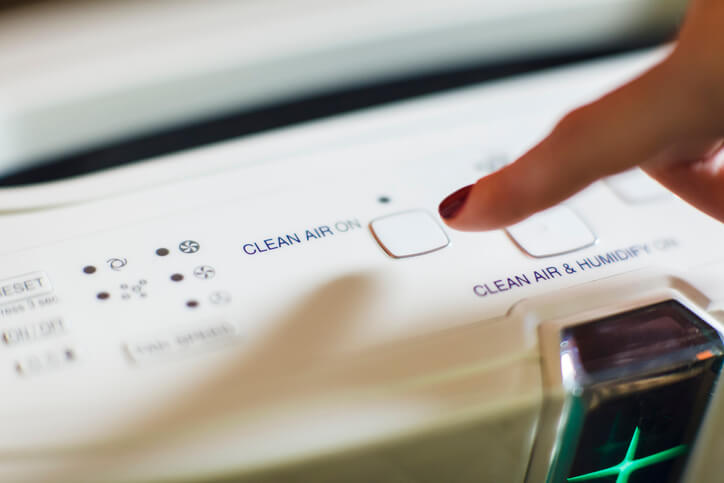Here at Spoor’s Heating & Air Conditioning, we consider ourselves to be in the business of caring for people. Accordingly, we believe an essential part of caring for someone is making sure they’re comfortable at home — all throughout the year. That's why, this allergy season, the experts at our HVAC company have decided to share some handy home-system recommendations to improve Indoor Air Quality (IAQ) and help alleviate those springtime sniffles.
Consider the following types of home systems to rid your home of asthma and allergy triggers so you and your family can breathe easier.
Need help determining which system is best for your home? Contact us and schedule an appointment with one of our air conditioning maintenance specialists!

Air Purifiers
Air purifiers, also known as home air cleaners, remove allergy-inducing pollutants from the air. There are two main types of purifiers: portable air cleaners and in-duct air purifiers. Portable air cleaners are the more common of the two but are limited in effectiveness and range. If you’re merely seeking to alleviate mild allergies experienced in one particular room, investing in a portable air cleaner will suffice. However, for those with severe allergies or asthma, we’d suggest going with something stronger.
In-duct air purifiers offer whole house purification. These powerful air purification systems are installed directly into existing AC units, offering year-round relief to chronic allergy-sufferers. Not to mention, in-duct air purification systems can reduce undesired household odors. Sound like the right system for you?
Get in touch with us to schedule installation services with one of our HVAC technicians!
High-Efficiency Air Filters
Air filters are every central HVAC system’s first line of defense against air pollutants. We recommend investing in air filters with a high Minimum Efficiency Reporting Value (MERV) rating. A filter’s MERV rating indicates its effectiveness at trapping a range of airborne particles and allergens — the higher the rating, the more it will trap. Typical residential air filters have MERV ratings of 1–4 for dust, pollen, and carpet fibers; 5–8 for mold spores, pet dander, and dust mite debris; 9–12 for legionella, lead dust, auto emissions, some bacterium, droplets from sneezes, and smoke.
For more serious protection, replace your air filter with a High-Efficiency Particulate Air (HEPA) Filter, which boasts a MERV rating of 17–20, Doing so can help eliminate approximately 99% of allergy-inducing contaminants in the home. What’s more, HEPA filters only need replacing once per year.
For help deciding on a HEPA filter for your HVAC system, contact us right away!
Energy Recovery Ventilators
Many allergy-afflicted people make the mistake of opening windows during springtime to let fresh air into the home — right idea, wrong execution. Opening windows does let fresh air into the house. Still, that air brings with it heaps of pollen, ultimately exacerbating allergies. Instead of opening windows for fresh air, we recommend installing an Energy Recovery Ventilator (ERV). ERVs work to improve a home’s IAQ by replacing polluted indoor air with clean air from outside, filtering out allergens, such as pollen, during the recirculation process. These are ideal devices for keeping fresh air flowing through the home without compromising air quality.
For help installing an ERV in your home, contact us!
The use of any of these home systems, alongside routine HVAC maintenance, can help relieve allergies, improve your home’s IAQ, and even reduce utility costs.
